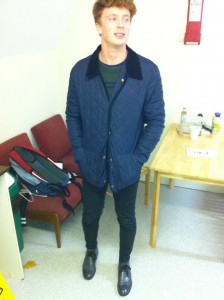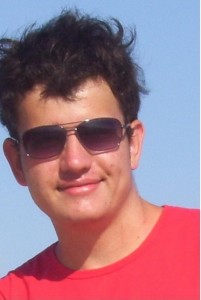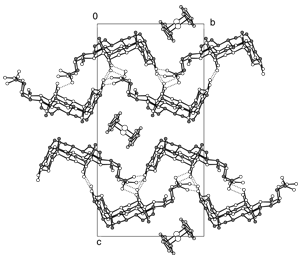 Will is working with Nick Rees, looking into the host/guest complexes of deoxycholic acid. Using variable temperature single crystal diffraction, along with Solid State NMR and Differential Scanning Calorimetry the project is particularly focused on phase changes within the crystal as a function of temperature. When not in the lab he enjoys long lunches, and competing for the Oxford Modern Pentathlon team.
Will is working with Nick Rees, looking into the host/guest complexes of deoxycholic acid. Using variable temperature single crystal diffraction, along with Solid State NMR and Differential Scanning Calorimetry the project is particularly focused on phase changes within the crystal as a function of temperature. When not in the lab he enjoys long lunches, and competing for the Oxford Modern Pentathlon team.
 An undergraduate at Pembroke, Rafal joined us for 5 weeks to carry out a summer research project between his 2nd and 3rd years. Rafal is working on the inclusion compounds of deoxycholic acid, particularly the nature of the host-guest binding and order-disorder phase transitions. When he’s not enjoying chemistry in the lab, Rafal can probably be found working hard in Pembroke College boathouse.
An undergraduate at Pembroke, Rafal joined us for 5 weeks to carry out a summer research project between his 2nd and 3rd years. Rafal is working on the inclusion compounds of deoxycholic acid, particularly the nature of the host-guest binding and order-disorder phase transitions. When he’s not enjoying chemistry in the lab, Rafal can probably be found working hard in Pembroke College boathouse.
Chirality (2008), 20(7), 863-870. Â Â [ doi:10.1002/chir.20561 ]
3 alpha,12 alpha-Dihydroxy-5 beta-cholan-24-oic acid (deoxycholic acid DCA) is able to discriminate between the R- and S-enantiomers of camphorquinone and endo-(+)-3-bromocamphor and select only the S-enantiomers from a racemic mixture. DCA forms novel well ordered 1:l adducts with (1S)-(+)-camphorquinone and (1S)-endo-(-)-3-bromocamphor, both of which have been characterized by single crystal X-ray diffraction (SXRD). When DCA is cocrystallized with (RS)-camphorquinone and (RS)-endo-3-bromocamphor, 1:1 adducts of the S-enantiomers are produced together with crystals of the free racemic guest. In contrast, in the absence of (1S)-(+)-camphorquinone, DCA forms a 2:1 adduct with (1R)-(-)-camphorquinone. In this 2:1 adduct the guest is disordered at ambient temperature and undergoes a phase change in the region 160-130 K similar to that observed for the ferrocene adduct, but with only partial ordering of the guest. The SXRD structure of the low temperature form and the variable temperature C-13 CP/MAS NMR are reported. Cocrystallizing DCA with (1R)-endo-(+)-3-bromocamphor gives the free guest and a glassy solid.
Ibby completed a D.Phil. in Chem. Cryst. in 2002 working on clathrates of deoxycholic acid. He now works in Malaysia where he is the proud owner of a new diffractometer and visits Oxford when he can.
